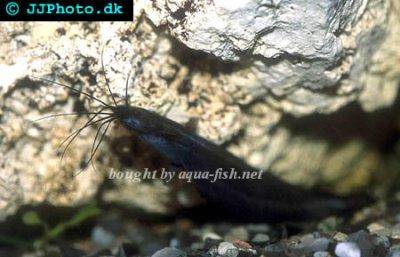Stinging catfish - Heteropneustes fossilis
Scientific name: Heteropneustes fossilis
Common name: Stinging catfish
Family: Heteropneustidae
Usual size in fish tanks: 25 - 30 cm (9.84 - 11.81 inch)
014
Recommended pH range: 6 - 8
Recommended water hardness: 8 - 22°N (142.86 - 392.86ppm)
0°C 32°F30°C 86°F
Recommended temperature range: 21 - 25 °C (69.8 - 77°F)
The way how these fish reproduce: Spawning
Where the species comes from: Sri Lanka
Temperament to its own species: peaceful
Temperament toward other fish species: peaceful
Usual place in the tank: Bottom levels
Food and feeding
Stinging catfish will eat a variety of foods. They will accept large cichlid pellets and chopped earthworms. They will also accept frozen prawns.
Origin
Asia: Stinging catfish are to be found in India and Thailand.
Sexing
Males will have a more slender body line; the females will be much plumper.
Breeding
The eggs will be laid in pits made into the aquarium substrate. They will be a yellowy-green color so are easily visible. Both parents will tend the clutch and fan water over them. Once hatched the fry can be fed on newly hatched brine shrimp and will grow very quickly.
Lifespan
The expected life span for Heteropneustes fossilis is 5-8 years.
Short description
Heteropneustes fossilis are mostly active at night time, hiding places should be provided for them to shade in the daylight hours. They will also require plenty of swimming space at the front of the tank.
Pictures
Bought by aqua-fish.net from jjphoto.dk.


